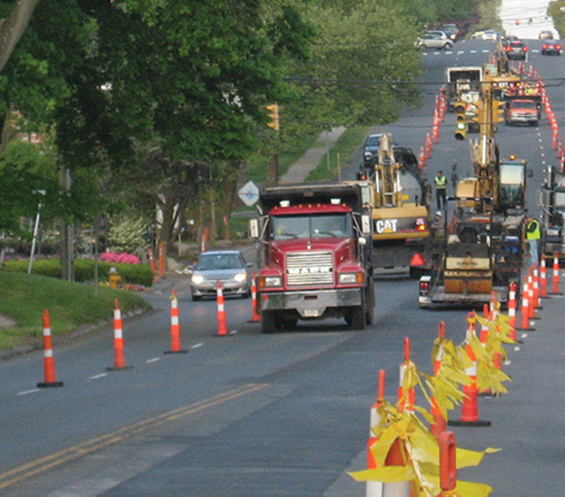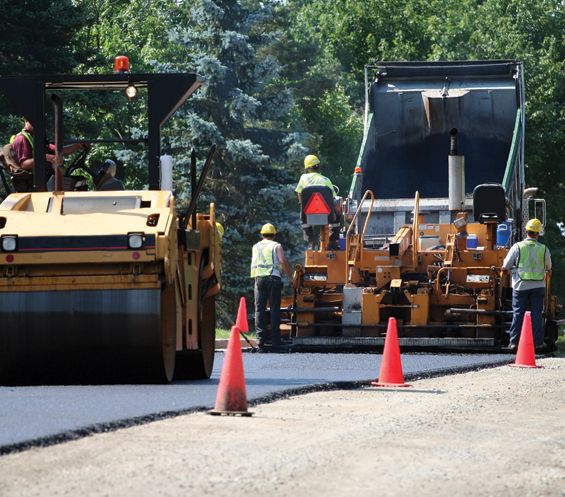Information on this page is for customers in
{{ town-name }}
Underground Construction Process
Our Underground Cable Modernization Program (UCMP) is a group of projects designed to modernize and increase the capacity of the existing underground transmission cable systems by replacing existing fluid-filled cable with cross-linked polyethylene cable.
Every underground project has three distinct phases of construction: manhole and duct bank installation, cable installation and restoration. Additional efforts may be required depending on subsurface conditions and other project requirements.
Manhole and duct bank installation
Before we begin construction, the underground cable location will be surveyed and existing utilities will be marked. We may also do testing to locate utilities or determine what the soil is like below the surface.
After surveys are complete, manholes will be installed along the route. Manholes are concrete vaults that are installed to allow crews to pull and connect the new cable.
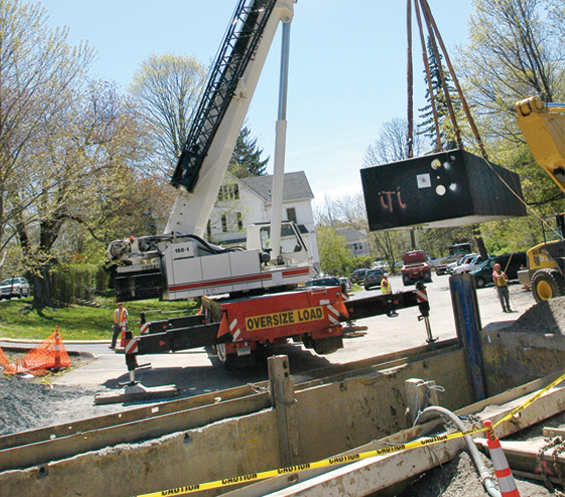
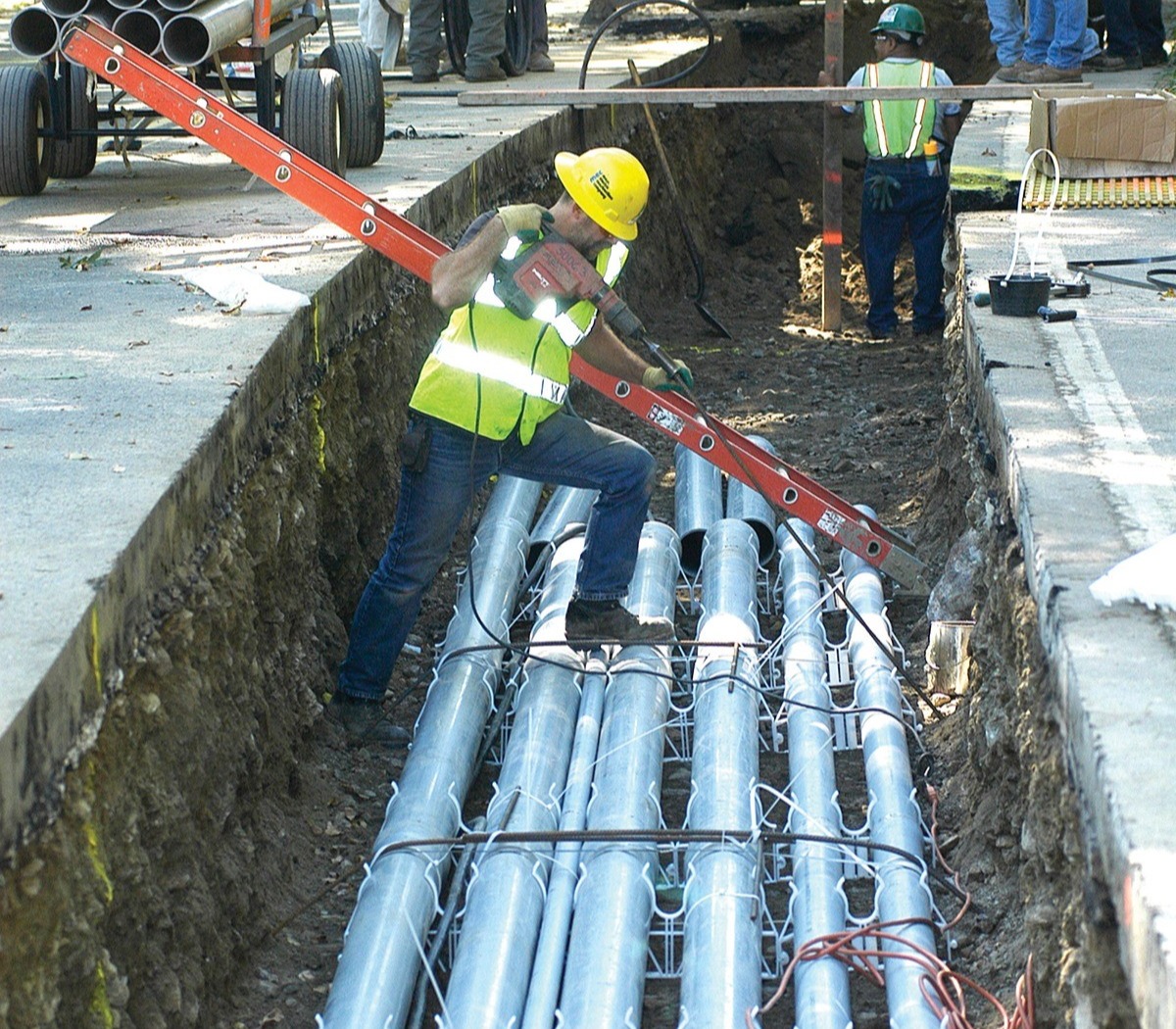
After restoration, there will be no visible evidence that a manhole is installed at the location other than the manhole lids within the power line corridor.
A duct bank—protective casing for pipes—will be installed between the manhole and the transition structures to install the cables.
After the duct bank is installed in a trench, the area
is backfilled to ground level, using excavated
materials, and restored.
Cable installation
Cable installation takes place after the duct bank and manholes are installed. The cable is pulled from a reel between manholes and transition structures along the route.
Next, the cables are connected together within the manholes. Connecting the cable is a complex procedure and a continuous operation performed by qualified technicians.
This phase of construction typically lasts three to five days at each manhole or transition structure. It involves equipment such as pumps, lifts, and generators.
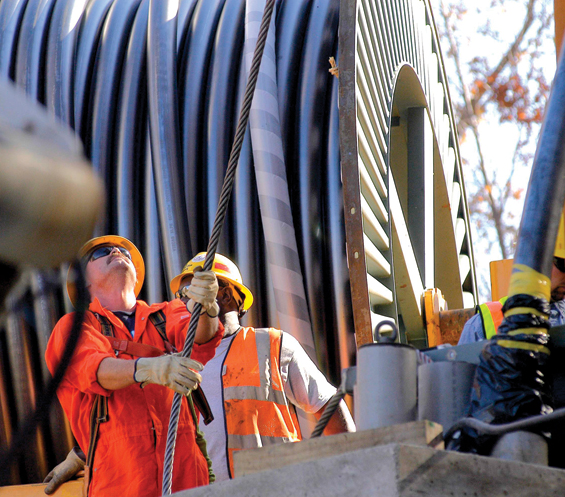
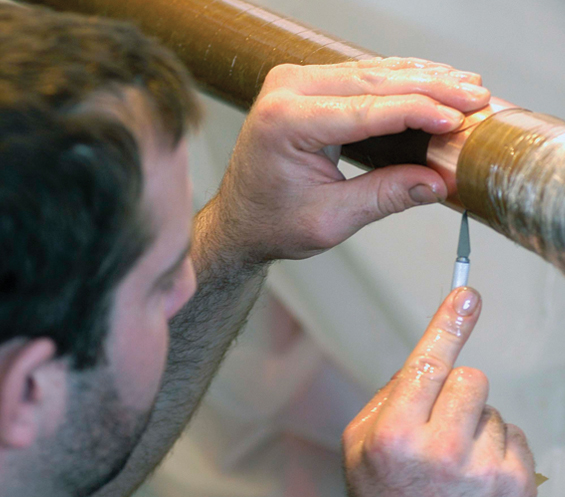
Restoration
When all underground construction work is completed, we will restore the affected areas. In general, surface restoration is done to meet the pre-construction conditions. For in-road construction, typically, a section of the pavement will be milled and paved during this process.
We will work directly with the affected
municipalities on restoration of road surfaces.
Where construction occurred in the shoulders of
the roads or in off-road areas, the surface will be
covered in a layer of topsoil and grass seed.
